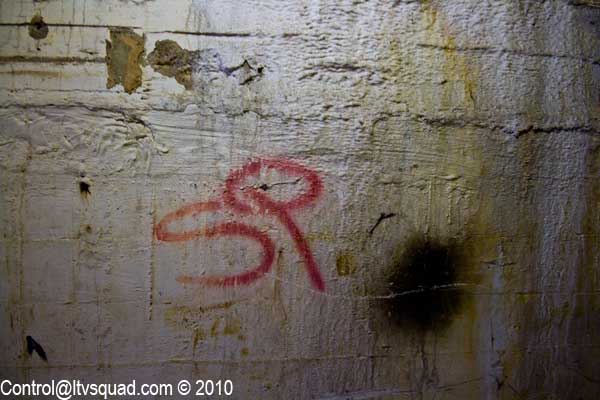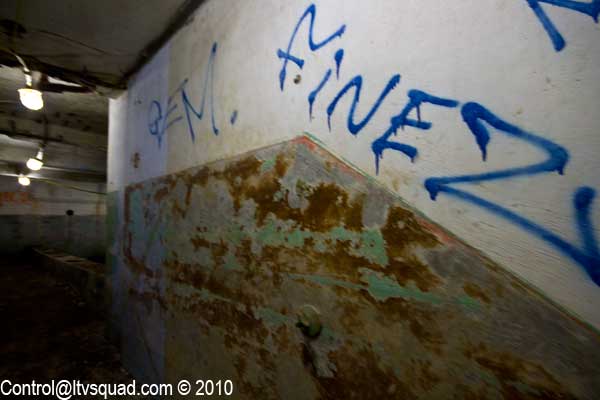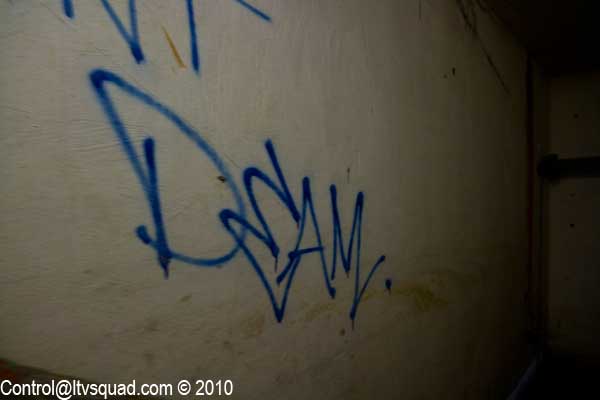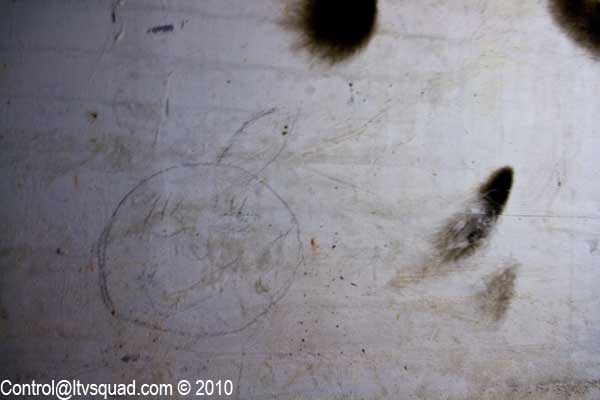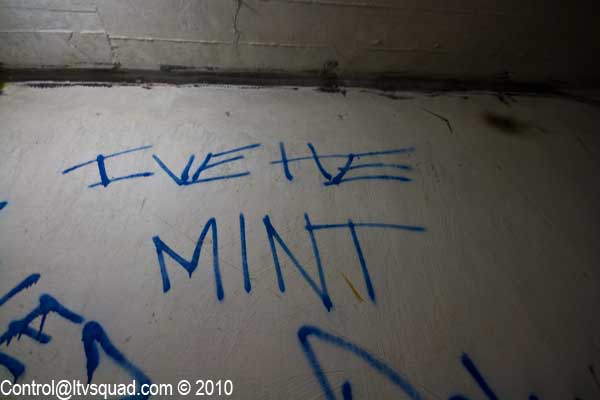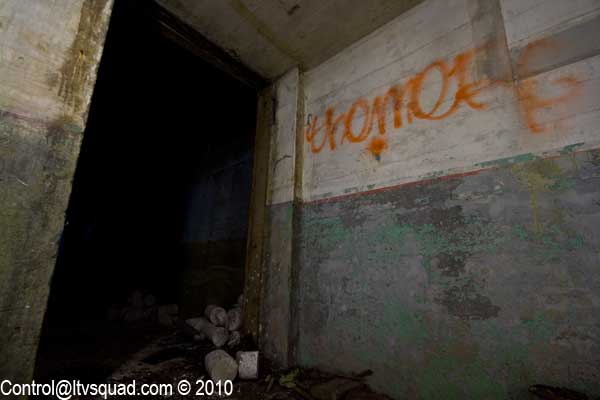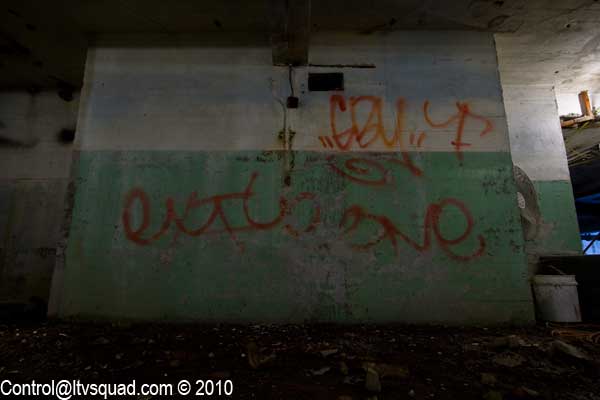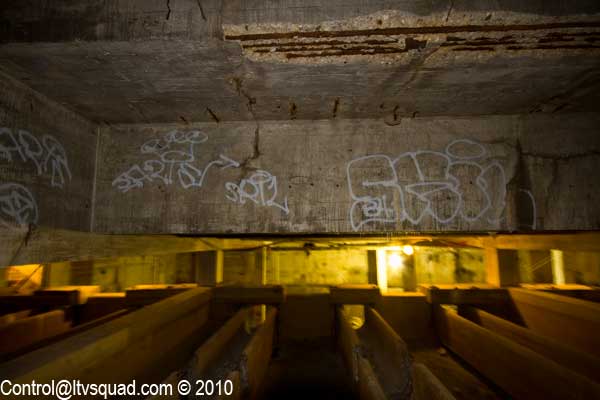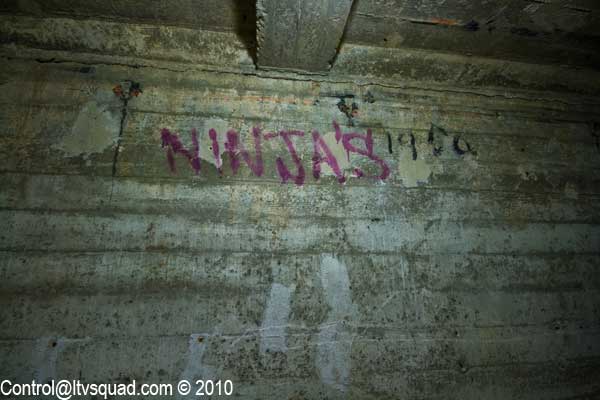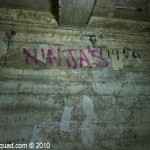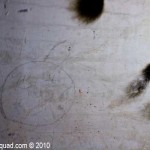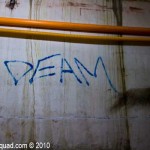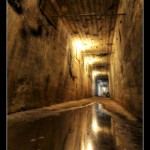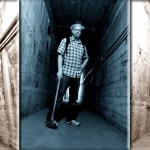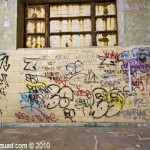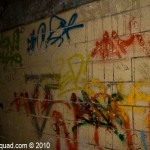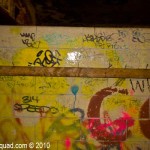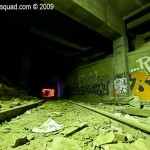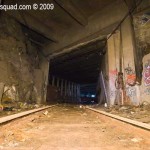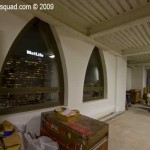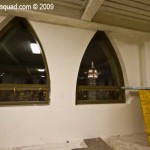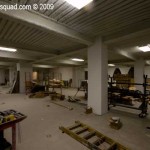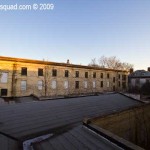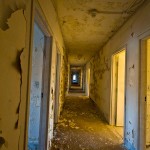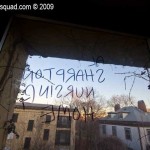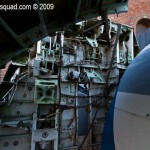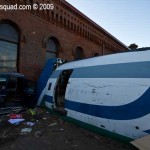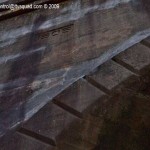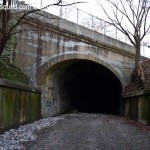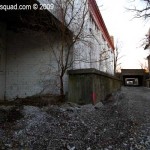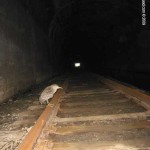McCarren Pool Tunnel Graffiti
By: Bad Guy Joe , Posted on June 9, 2010
McCarren Pool Tunnels
By: Bad Guy Joe , Posted on June 8, 2010
Unknown to most, McCarren Pool contains a tunnel system. This tunnel system is a ring that starts under the main arch entrance and runs just under the edge of the pool in a large square. The rear side opens up to what was (and will be) the pool's filtration room. Additionally there is a side tunnel that runs below the rim of what was once the diving pool (filled in and set to become a volleyball court).
Instead of hogging all the photo glory of having roamed through this place, I now turn this post over to the flavorful lens action of one
Mr. ProZak, who accompanied me on this latest pool excursion.
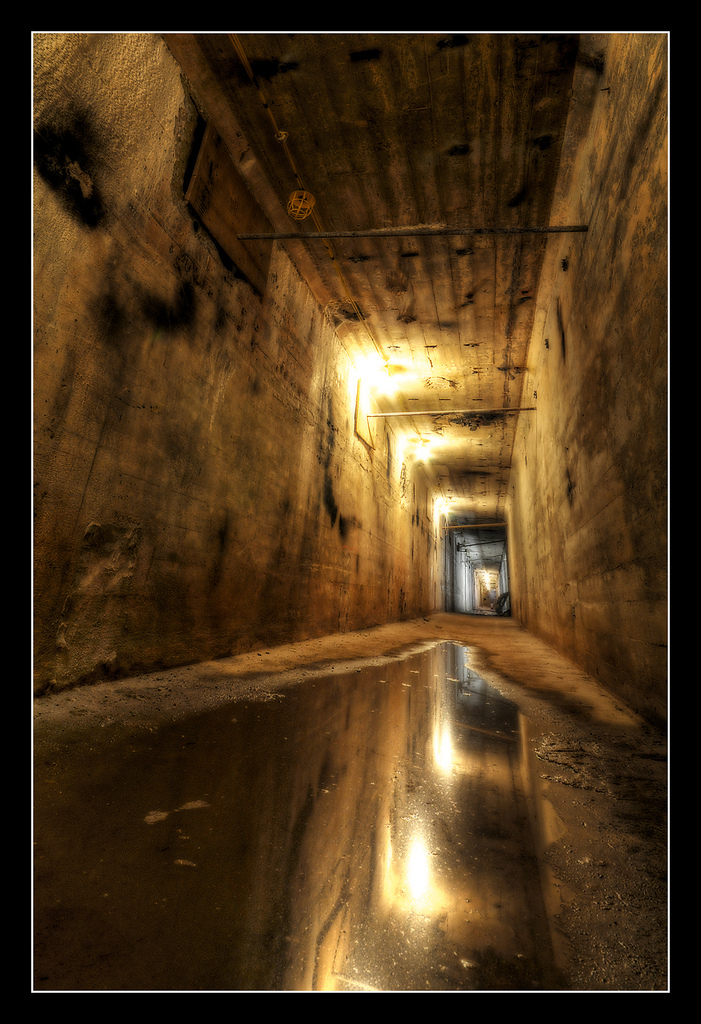
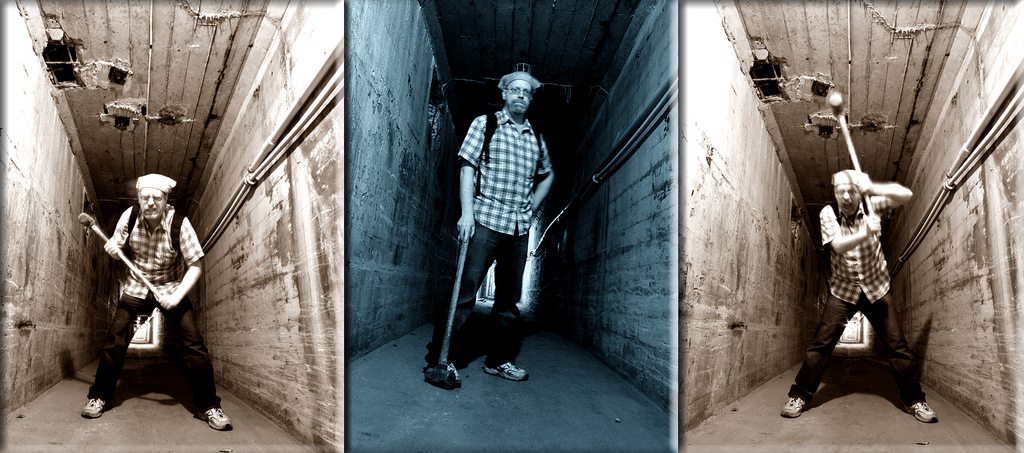


Stay tuned for our next McCarren Xpose tomorrow, detailing the graffiti found in these tunnels.
McCarren Pool 1980s Graffiti Exposed
By: Bad Guy Joe , Posted on
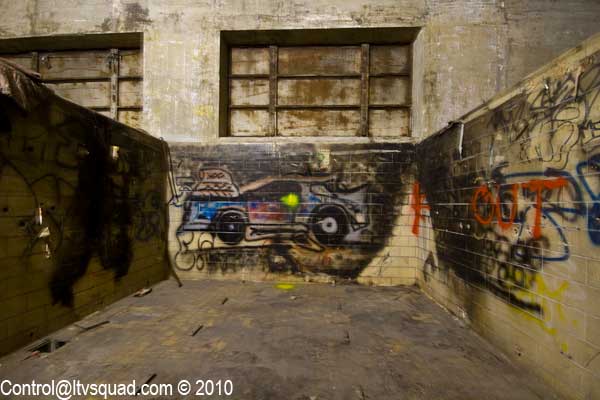
When we first entered the former locker room areas of
McCarren Pool, I was most pleased at this discovery. It is and was probably the most impressive graffiti discovery of 2010, period. While I know that is a huge, huge statement to make, you really must understand what we have here in these photos to truly appreciate the extent of the situation.
All of these photos were taken in 2010. All of the graffiti you see here (well, with one or two exceptions) was done inside the locker rooms of the pool during the 1980s. The date range of these tags runs from 1983 to approximately 1987. It is rather easy to conclude that during the years immediately after the pool was closed, the entire site was completely abandoned - doors left open, and vandals taking full advantage. At some point in the late 80s the buildings were sealed up with concrete and reinforced iron. From that point on, even while the exterior of the building became an illegal graffiti haven, no other graffiti artists gained access to the locker rooms.

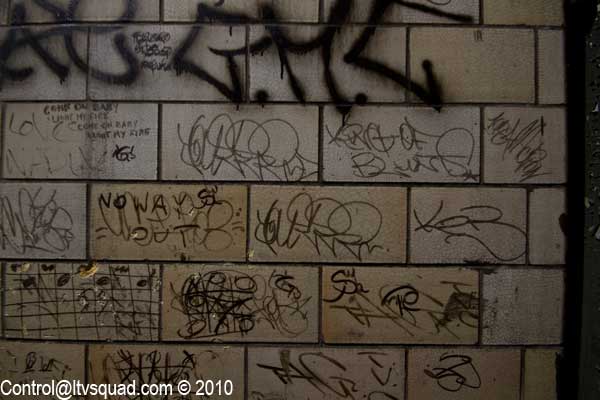

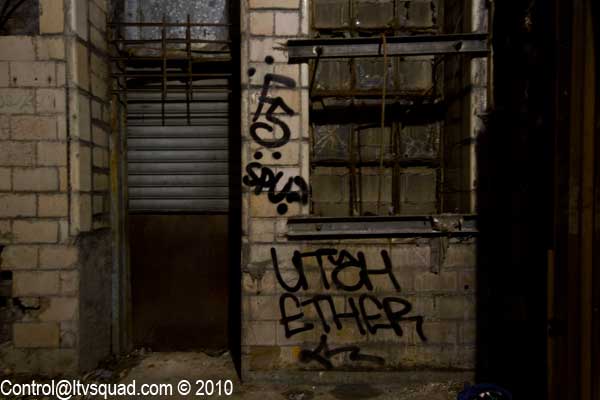
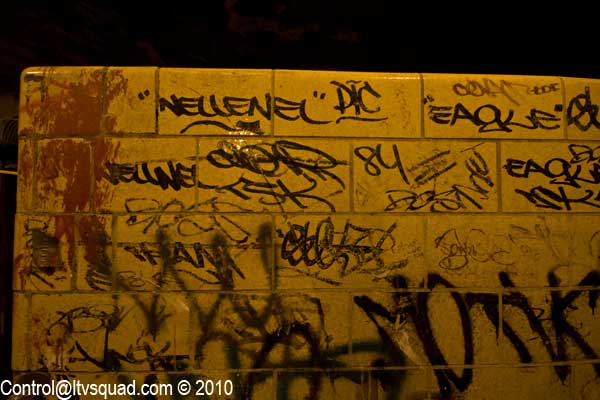
This is most likely the last graffiti find of this variety in NYC to have survived until 2010. I can say this with a high regard of authority, having been in nearly every abandoned building within NYC over the last 20 years. The stock of abandoned buildings here was decimated during this time. Out of hundreds of such buildings the only intact walls of pure 1980s graffiti I ever found was the
Graffiti Room in Greenpoint Terminal Market.
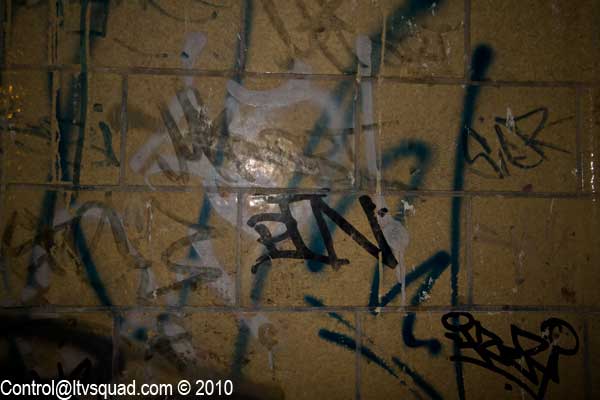
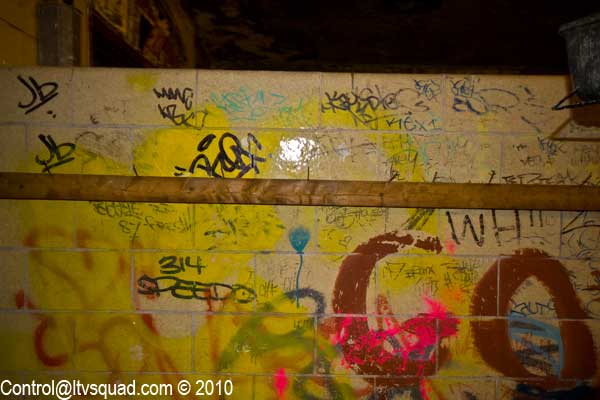
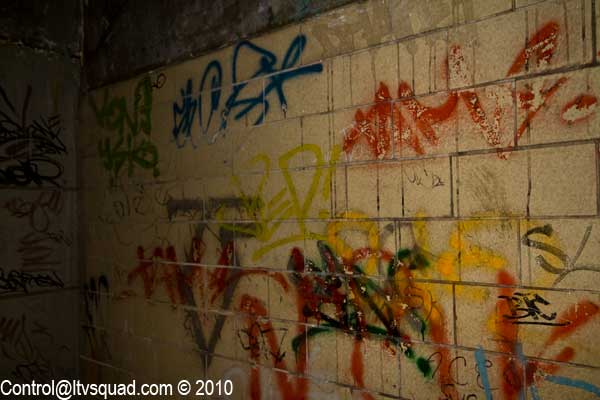
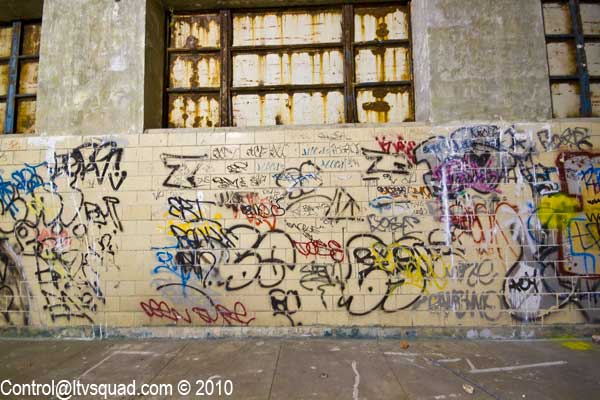
These photos represent a small portion of the dozens I took of this amazing graffiti find. Sadly, as of this last month, the locker rooms at McCarren Pool have been completely gutted. No trace remains of nearly all of this graffiti. These photos are the only proof it ever survived this long. I am of course, most pleased to be able to present them to you. Enjoy.
Stay tuned for tomorrows episode, where we go deep into the tunnels (!!!) and expose even more amazing finds.
Luv Tunnel 2: The Cows Come Home?
By: Bad Guy Joe , Posted on April 15, 2010
Yesterday's fuss about the west side 'Cow Tunnel' really got me wondering if perhaps the 'Luv Tunnel' was known by another name decades ago. Afterall, They are located not far from each other and urban legends, particularly concerning the NYC underground, are often wildly exaggerated. Stories about hidden abandoned subway stations still with pianos in them, CHUDs, etc are sadly pervasive. Thus it's not much of a stretch to assume that rumors of a possible tunnel built at 34th street could actually be an actual, existing tunnel at 41st.
Before we go further, if you haven't already, check out the original post on this topic over at
Edible Geography. It's a most interesting read...
The Luv tunnel has always been a bit of a mystery to me. It's a short tunnel that dead ends at a solid concrete wall. According to some older graffiti artists/explorers, this tunnel once dead ended at the Hudson river. I never got around to doing homework on it until now (10 years after discovery of it)
There are very few references to what function this tunnel previously held online. Approximately located below W41st street, 'the luv tunnel' served 2 functions:
1) As a wye (used to turn railroad cars and engines around - sort of like making a 3 point Uturn, only on tracks), and
2) To service stock yards previous located above these tracks.
My only current reference for this second part is this obscure web page - with the relevant quote: "At 41st Street there was a wye as well as a stub track to several slaughter houses".
This is however backed up by the location of a stock yard and slaughter houses on this old 1920s map.

As you can see, there was a rail line (denoted by the solid line with the slashes through it) running up the south side of W41st street to service the stock yards (where one can assume cows were delivered for the slaughterhouses). When these tracks were later placed below grade, my theory is a basement level loading dock was built to connect to the tunnel. It's not very far fetched when you consider how many businesses modified their buildings to receive rail service from the (then new) High Line.
Underground tunnel + Slaughterhouses = "Cow Tunnel" ?
If you have a better theory and more information, please step forward with it in the comments. I'll gladly update this & give cred where it's due.
Until then, enjoy these modern day photos of the Luv (maybe Cow) Tunnel.
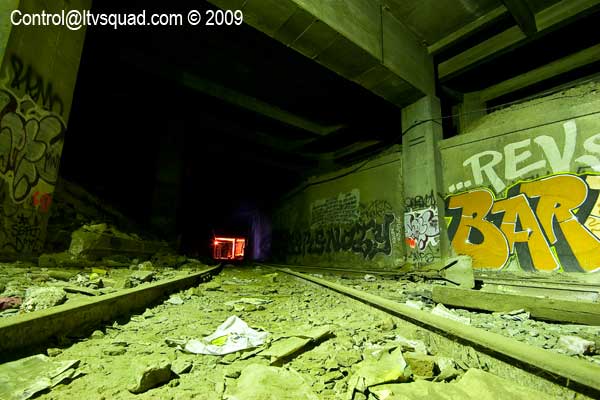
Junction of the 'Wye'.
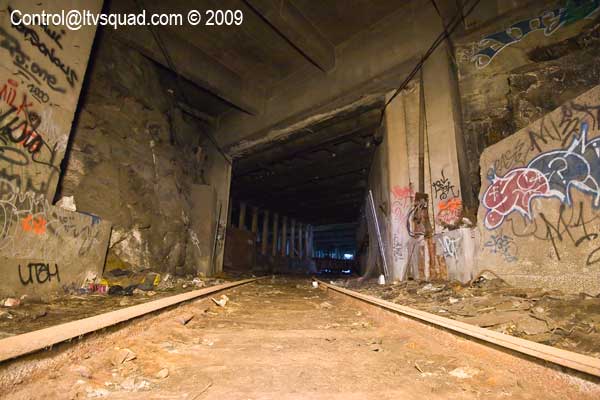
One of 2 Wye tracks, facing south (and yes, it's
Utah's world, we just visit it)
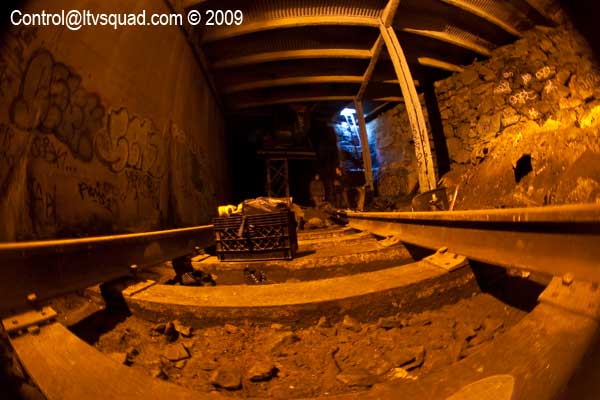
End of the line facing 12th ave.
Miru Kim & Ben Gibberd are the mysterious characters in the background - we were down there for
his excellent NY Times story.
(Hey since I'm so plug-happy today, how about that
Utah plug one more time?
Utah, Bitches!)
High Rise Construction Site
By: Bad Guy Joe , Posted on January 24, 2010
So we went into this high rise construction site and found absolutely nothing worth seeing. Really!
(well, it's either that or I'm foreshadowing another post again)
Brooklyn Navy Yard Hospital Nurses Quarters
By: Bad Guy Joe , Posted on January 19, 2010
The Brooklyn Navy Yard Nurses Quarters (Building RG) is one of the most overlooked abandoned buildings in NYC.
Read More Here
Baruklianic Flight 815
By: Bad Guy Joe , Posted on January 6, 2010
As we approach the start of the final season of Lost, I thought it'd be comical to throw this tribute online to Brooklyn's own smashed and lost airliner. Located abandoned and exposed to the elements, these sections of 2 separate scrapped airlines lay derelict on the ground, awaiting an uncertain future.
2000-2010 Ten large industrial locations that are no more.
By: Bad Guy Joe , Posted on January 3, 2010
The last decade has been very unkind to NYC’s industrial history. Many large abandoned buildings have been bulldozed, and others – which were still actively in use, have also been bulldozed in order to make way for high end condo buildings – which are of course in economic trouble now that the real estate bubble has burst. Here is my short Top 10 list of industrial locations within NYC that have been wiped from the earth in the last 10 years. The majority of these are only being revealed here by their real names for the first time.
1. Schwartz Chemical / The LIRR power house – LIC
2. Pepsi / Standard Oil – LIC
3. Greenpoint Terminal Warehouse – Greenpoint
4. Brooklyn Navy Yard Power Plant – Williamsberg
5. Washburn Wire Factory , Harlem Herion Shooting Gallery – Manhattan
6. Waterside Power Plant, Manhattan
7. Nelson Galvanizing, LIC
8. DSNY Garage, WillyBerg
9. Todd Shipyard, Red Hook
10. Revere/Sucrose Sugar, Red Hook
In the coming months keep an eye out for extensive historic write ups on all of the above locations as well as some of the hundreds of others that we have visited over the last 10 years. We’re not going to stop there though… Keep your click hand free because you’re going to be coming back here for more… a lot more.
St. Mary’s Tunnel 2009 – it’s not a swamp, it’s a cesspool
By: Bad Guy Joe , Posted on December 27, 2009
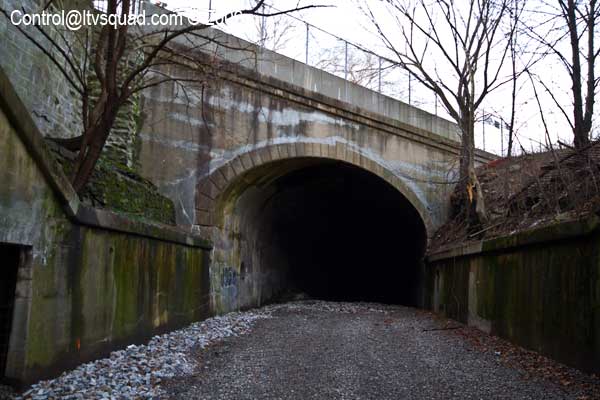
It was time for a long overdue return to this abandoned rail line to properly cover what has turned out to be the city's failed clean up effort of the abandoned Port Morris tracks in the Bronx (aka 'The Bronx Swamp').
While the media seems content to throw the city administrators a lot of fluff pieces for cleaning up part of the line, we found that the tunnel under St. Marys Park is still full of water, and north of there - this former railroad right of way is still loaded with syringes, junkies and homeless camps.
The photos tell the story.
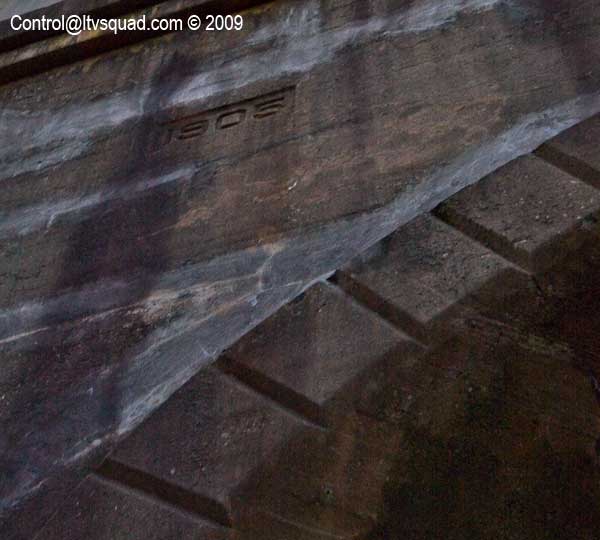
1905 - when the tunnel was built.
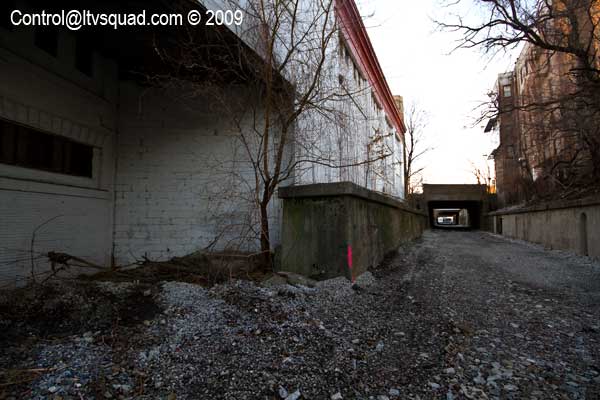
Former rail siding
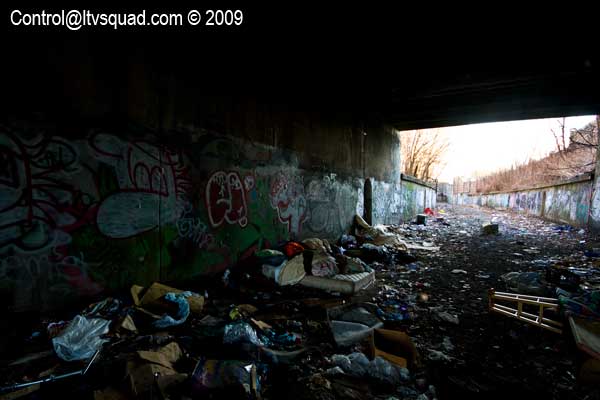
Homeless camp at the northern end of St. Mary's tunnel
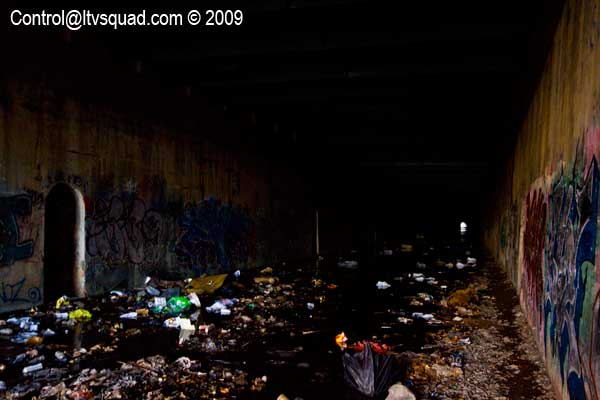
Looking back into the tunnel - filled with garbage and shitwater.
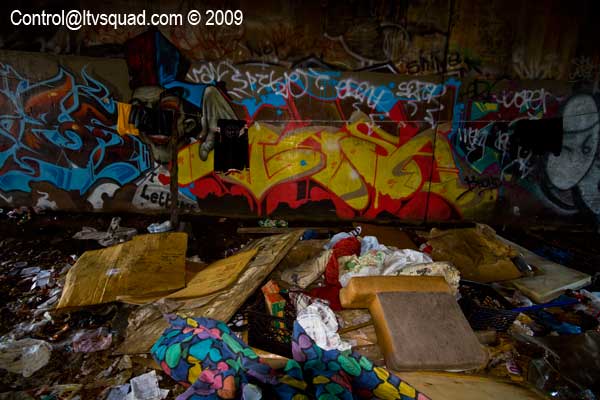
Human Debris

Camp Bedbug.

Needles everywhere down here.
North end of the tunnel.

Port Morris Branch: The so-called Bronx Swamp.
By: Bad Guy Joe , Posted on December 23, 2009
We've seen some reporting as of late on '
The Bronx Swamp'. I'm not honestly sure who began calling this abandoned freight rail line by this name but it is a very inaccurate one that doesn't tell of the location's true rich history. This section of track is much better known as the Port Morris branch, and it is not, nor has it ever been, a swamp.
While the newspapers, bloggers and authorities seem confused as to who owns property, I can tell you beyond a shadow of a doubt it was, at least up to 2003 owned by CSX transportation. Somewhat unbelievably, it was an active railroad until 1998, and was only officially filed as abandoned with the
STB in 2003 (published in the Federal Register V68 N52 March 18 2003). It has also been covered on this site many times over the last few years.
A 2002 outing for example documented how the tunnel under St. Mary's park was used as a home by at least one migratory bird (a yellow crowned heron - which makes it's home in caves).
2002:
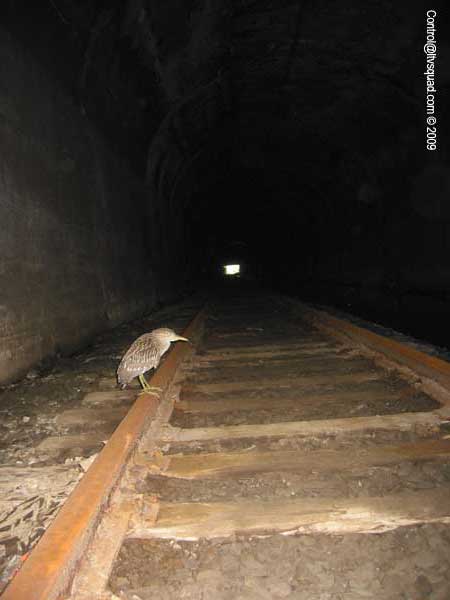
Railroads are a tricky and very old business. Many rail lines are not owned by the railroads outright. They are owned by adjacent property owners who cede the land to the railroad only for use as a railroad. If the railroad decides to stop operating over that section of track, the property rights go back to the original owners. In the case of the Port Morris Branch, the tracks were build here in the 1840s. Since CSX filed for abandonment, it's anyone's guess who the owner is today. The NYC' government's attempt to get paid for the clean up work will likely at the least take years of litigation before coming to a resolution.
It should be noted here that the Port Morris would never have been abandoned if it wasn't for two separate factors: The first being that the branch, with it's tight curves and low tunnel under St. Mary's park, was an obstacle for freight in NYC. The tight curves meant that longer freight cars could not be moved down the line, and the height of the tunnel restricted the taller intermodal cars from using these tracks. These higher and longer cars are a cash cow for railroads. The state was convinced (and rightfully so) that not being able to move these cars by rail was adding trucks to the roads of NYC. Their solution was to build a 1.9 mile railroad branch known as '
The Oak Point Link'. This segment of track is build on a pontoon bridge along the shore of the South Bronx, over the Harlem river. The link was also designed to eliminate the need for freight trains to run through Mott Haven Junction - a major junction where all commuter trains into Grand Central converge. For a freight train to get through the junction and onto the Port Morris branch, it had to cross all tracks, essentially blocking the entire junction - a recipe for an epic fail.
On September 18, 1988, just such a disaster took place. The daily Selkirk->Oak Point freight left Selkirk with a few cars that were too tall to fit under the bridges along the tracks in the Bronx. When this train arrived in the Bronx is smashed into the River Ave overpass near Yankee Stadium. The derailed cars blocked all of the Metro North's Hudson line tracks. The head end of the train was well into Mott Haven Junction and about to enter the Port Morris branch. This effectively prevented any trains from accessing Grand Central - and all of this just in time for rush hour. Thousands of commuters were completely screwed.
After the accident Conrail (later CSX) began using the
Oak Point Link that runs around the southern end of the Bronx - thus avoiding using the complex set of switches at Mott Haven Junction. This obliterated the need to operate the short Port Morris branch - which no longer had any local customers and the function of which was now significantly better served by the Oak Point Link.
The Port Morris branch was a hated necessity for the railroads up until 'the link' opened. Rotting crossties, decades of trash, deranged homeless druggies on the tracks - all were horrible conditions to run a railway in. Clean up efforts were apparently futile as neighbors and illegal dumpers used the tracks as their own toilet. This trash didn't just magically appear here one day - it was 'air mailed' down onto the tracks by kids and neighbors who just plain did not care. Conditions were so bad that the railroad had to mandate that all of their engines running through the Bronx be equipped with snow plows year round due to the debris often thrown onto the tracks here. CSX was all too happy to shut the line down, rip out the rails, and disavow themselves of ownership completely.
2008:
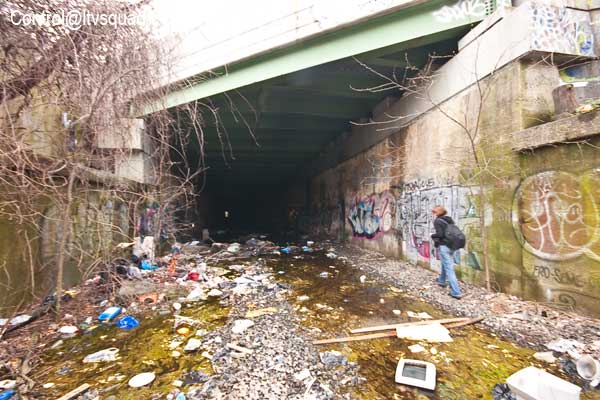
There were various reports during the last decade that the Port Morris would be sold to the MTA for potential reuse as a transit line connecting Co-Op city to Grand Central. My quick search can find no record of such a sale though. Funding for this project has never materialized, and the Melrose Metro North station has been expanded northward to block the connection to the old Port Morris branch to boot.
There is no doubt that between acquiring half of Conrail and the line's abandonment in 2003, that CSX was the owner of this property. It was most likely the railroad that removed the rails (which can usually be reused or at least have a good scrap value) sometime between 2001 and 2003.
Some are saying these tracks should also be opened as a park - calling it 'the low line' and suggesting that you can't be charged with trespassing because no one owns it. The latter is false information. You can visit this line assuming no one has put up 'no trespassing' signs. Beyond that you're taking a minor legal risk. Your chances of getting caught are about as low as Tiger Wood's moral right about now, but if you are spotted by a cop you can and most likely will get a DAT (Desk Appearance Ticket - aka a date with the judge who can give you up to 15 days in jail). No police officer is going to listen to your argument that no one owns the property. Save that for the judge, or just take the fine or ACD that'll be offered instead. That is, unless you want to piss off the judge and spend 15 days on Rikers.
It would make an interesting park, though perhaps it's best to just leave it as it is.
We've seen the fiasco that the administration of the High Line has become and we are not pleased. Maybe if it's just owned by the city and doesn't involve any strange non-profits with their own agenda it make for an interesting park free of egos.
I will be visiting this location soon for more up to date photos, but if you happen to get up there before me, feel free to email me some shots & I'll link or post them here.
(Thanks to Shane for helping me dig up some info on rail line abandonment)


